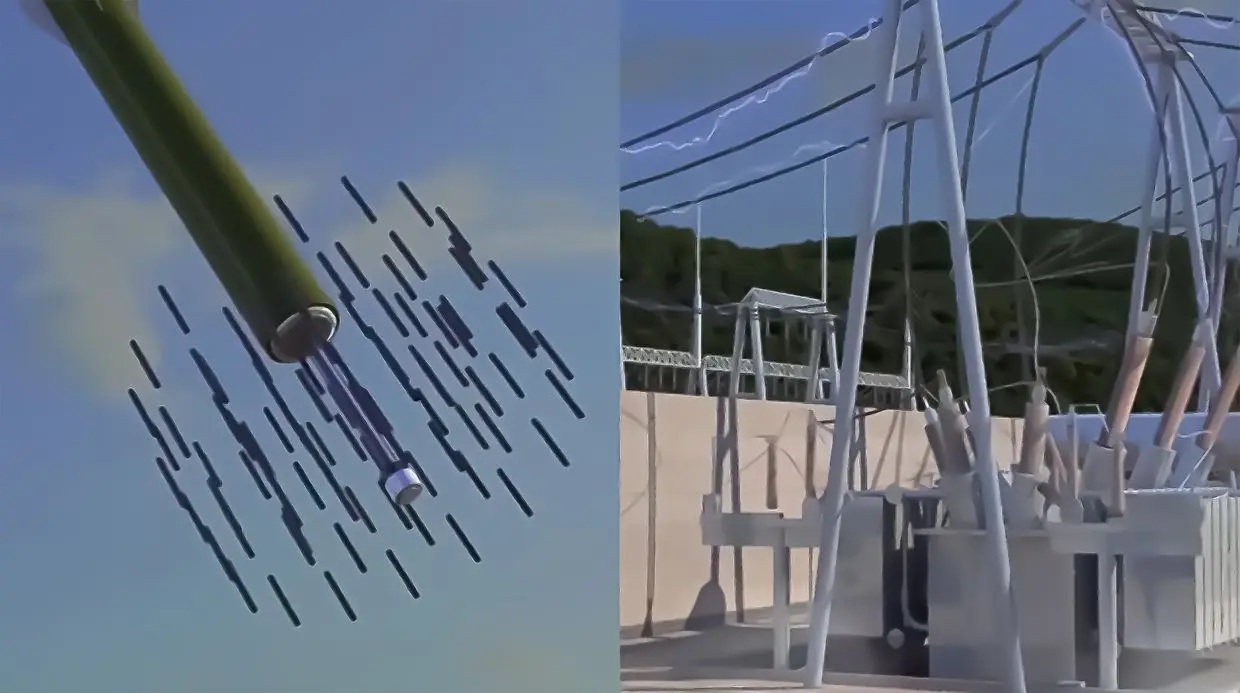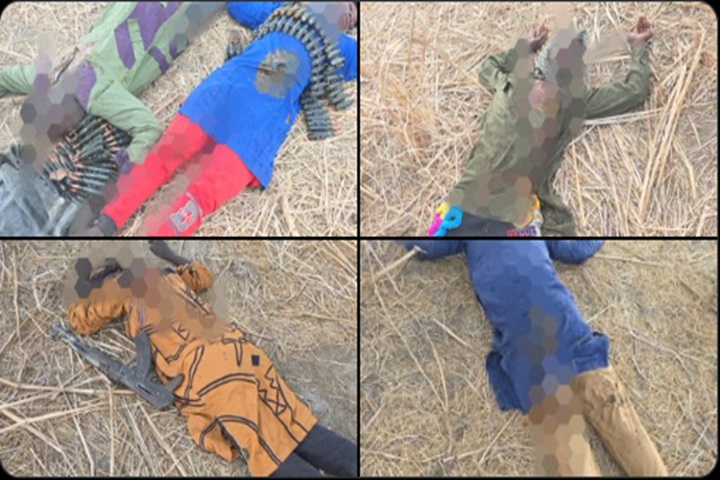News
China’s Shadow Strike: A Bomb That Doesn’t Explode, But Still Paralyzes
China unveils new "graphite bomb" that targets grid and not battlefield

In a striking development that could reshape modern warfare, made public on Monday, June 30, 2025, China’s state-run television recently unveiled a powerful non-lethal weapon known as a “graphite bomb,” which can plunge vast areas into darkness by disabling electrical infrastructure.
According to the South China Morning Post, this new weapon is capable of rendering an area of 10,000 square meters completely powerless or even knocking out entire power stations.
The announcement came via an animated segment aired by CCTV, showing the bomb’s simulated deployment.
The footage depicted a missile launched from a ground-based system, soaring toward its target before releasing around 90 small submunitions.
These submunitions scatter across the terrain, bounce, and then detonate, blanketing a model electrical substation in fine graphite particles.
The result? A total failure of nearby electrical equipment, dramatized by lights flickering out and control panels sparking in the animation.
This revelation comes at a time of heightened geopolitical tensions.
As fears grow over a potential Chinese military move against Taiwan and with China’s continued support for Russia amid its ongoing war in Ukraine, the unveiling of this weapon has sparked widespread international attention.
What Is a Graphite Bomb?
Also called a “blackout bomb” or “soft bomb,” the graphite bomb is designed to take out electrical systems without causing direct human casualties or structural destruction.
It works by dispersing an ultra-fine cloud of graphite particles over electrical infrastructure.
Graphite, being highly conductive, causes short circuits when it comes into contact with electrical systems, effectively shutting them down.
Although these bombs are non-lethal by design, their effects can be devastating. Targeting a power grid or station could black out entire cities, disable public services, halt transportation, and interrupt access to clean water or medical care—indirectly endangering lives.
A Weapon with History
Despite sounding futuristic, graphite bombs are not new. Western military forces have used them in the past.
Notably, NATO deployed them in 1999 during the Kosovo conflict, targeting Serbia’s electrical grid.
Around 70% of the country lost power instantly, as five major power plants were disabled.
While the intention was to hinder the Yugoslav Army’s communications and radar without causing mass casualties, the civilian toll was undeniable.
Power outages hit hospitals, shut down water treatment plants, and paralyzed public transport.
An analysis by the International Physicians for the Prevention of Nuclear War later stated that such tactics amount to “a war on public health,” as they severely affect access to basic services.
The U.S. also employed graphite bombs during the 1991 Gulf War.
Using the BLU-114/B model, American forces successfully disabled Iraqi power distribution facilities, causing blackouts that lasted nearly a month in some regions.
Interestingly, U.S. officials have historically remained tight-lipped about the weapon.
Following the NATO use in Serbia, a Pentagon spokesperson declined to offer details, stating, “We have certain weapons we do not believe it is appropriate to talk about, and this is one of them.”
How Does China’s Version Compare?
While specifics about China’s new graphite bomb remain under wraps, there are apparent differences in design and deployment.
The American version, the BLU-114/B, uses carbon-fiber filaments, which unfurl mid-air and form conductive clouds upon contact with electrical systems.
In contrast, the Chinese model, as seen in the CCTV animation, relies on self-detonating submunitions that disperse graphite particles after bouncing on the ground.
This possibly offers more precise targeting and area control.
Who Else Has These Weapons?
China isn’t the only nation outside the West to explore this technology.
In 2017, South Korea confirmed it had developed a graphite bomb and was prepared to deploy it against North Korea if conflict escalated.
This development underscores a broader trend: more nations are seeking non-lethal, infrastructure-targeting weapons that can cause strategic paralysis without crossing the conventional threshold of warfare.
The Bigger Picture
Graphite bombs may avoid the catastrophic loss of life associated with traditional explosives.
On the other hand, their ability to cripple critical infrastructure makes them a serious concern, especially when wielded by powerful nations in unstable regions.
As geopolitical rivalries sharpen and the global balance of power shifts, weapons like these could become central to modern-day conflicts that aim to disable rather than destroy.
For Diaspora Digital Media Updates click on Whatsapp, or Telegram. For eyewitness accounts/ reports/ articles, write to: citizenreports@diasporadigitalmedia.com. Follow us on X (Fomerly Twitter) or Facebook












